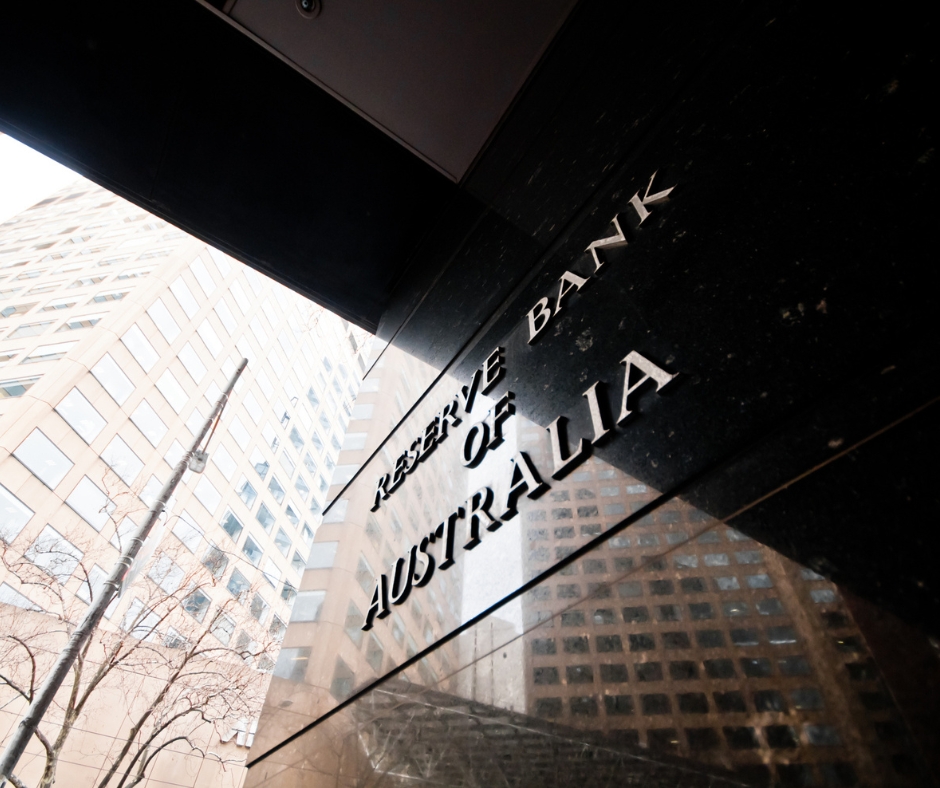With the RBA Board set to meet on 1 November, a number of data sets and other economic indicators have been released which may have an impact on interest rates. These are events and data which may be used by the RBA to guide cash rate decisions. The figures and trends may also influence the individual outlook and forecasts by lenders in setting their own interest rates on a range of business loans and finance.
Staying across the economic indicators and statistic as released by the Australian Bureau of Statistics (ABS) can be utilised by business owners, operators and decision-makers to establish asset acquisition strategies and make other business plans. The ABS releases data covering general economic indicators such as inflation and employment as well as industry-specific data. All valuable intel for astute business operators.
Employment Figures Released
The rate of unemployment has been falling over recent months and the latest figures reported by the ABS reveal the rate has stayed stable for September at 3.5%.
Mr Bjorn Jarvis who is the Head of Labour Statistics at the ABS said that 9,000 people ‘left employment’ while 1,000 new jobs were found. The nett result being a 0.1% increase which is seen as slight and when the figure rounded, it is reported as a steady result.
Mr Jarvis said the growth of employment had slowed recently as the same number of people that went into jobs, around 500,00m were also leaving employment. The period revealed a slight drop, less than 0.1%, in the number of hours which were worked. According to Mr Jarvis this was a result of annual leave. More people took leave in September. In September of the last two years, less people took leave due to lockdowns and other restrictions imposed due to COVID-19.
Of interest to many business owners may be the figures on sick leave. For the reporting period the sick leave was higher than is typical for September but not the 2-3 times higher than normal as was recorded in the earlier months of 2022. With easing of isolation regulations for COVID-19, it may be expected that this would drop further in coming reporting periods.
For businesses that would like more information and a deeper dive into the labour situation in Australia, the ABS has also released an extensive report titled ‘Labour Force Australia’. Visiting the ABS website on a regular basis to see what latest figures have been published may assist businesses in forming a view of potential climate for their operation moving forward. There is also a list of which reports are upcoming.
In regard to effect of employment on interest rates, the data is of interest to the RBA in making its decisions. It has noted on a number of occasions the tightness in the labour market, ie the low rate of unemployment, as a major issue which is constraining business and supply. The constrained level of supply not meeting the high levels of consumer demand then fuel inflation.
In its most recent monetary policy statement in October, the RBA Board said its expectation for unemployment was to fall further before recorded an increase in 2023.
Inflation Figures
The rate of inflation is key to the current increases in interest rates and the main driver behind the RBA’s aggressive approach to monetary policy with 6 consecutive rate hikes. Recently the ABS said it would release inflation figures on a monthly rather than quarterly basis.
The next announcement on the rate of inflation – Monthly Consumer Price Index Indicator, is due to be released by the ABS on Wednesday 26 October. This will cover the reference period of September. This announcement will come less than a week from the next cash rate decision by the RBA.
What these figures will not reflect is the expected 0.8% rise in inflation by the current floods impacting eastern Australia. The effect of the floods, especially in prime food-producing areas of VIC and NSW are expected to drive food prices up significantly.
The effects of the northern NSW floods earlier in the year were noted by the RBA as contributing to the rise in inflation. So it could be expected that the ‘October flood event will also have an inflationary impact. It may be a month or so before this is reflected in the inflation rate.
RBA Board Meeting
The next meeting by the RBA Board in regard to cash rate decisions is Tuesday 1 November. The announcement comes in the early afternoon on a day when most Australians are transfixed by the Melbourne Cup. But with interest rates now at the highest in many, many years, it is likely that the RBA may be the event that stops the nation this November.
At its October meeting, the RBA said more rate rises could be expected. So experts and analysts are expecting yet another increase on 1 November. But the RBA eased back in October to a 0.25% rather than the previous four 0.5% hikes. Whether that can be taken as a permanent easing will be known after the November meeting.
Federal Budget
Another major economic-related event to note is the Federal Budget to be brought down by Treasurer Jim Chalmers on Tuesday 25 October. For the past few weeks in the lead-up, few specific details have been leaked, especially in relevance to businesses. But both the Treasurer and Finance Minister Katy Gallagher have said it will be a bread and butter budget.
The Government has talked up the need to cut back spending to address the deficit, which was very much accrued through pandemic support. So it would not expected that there would many if any ‘hand-outs’ to business.
Interest Rates
It looks certain that there will be more increases to the cash rate which typically result in increases in lending rates. However, some lenders do raise rates based on their own intel and forecasts and that can occur prior to RBA decisions.
Rates on business loans do vary across the lending market and even across specific industries. Using services such as ours which provide access to many lenders, including specialist non-bank lenders, can be of great benefit in sourcing cheaper interest rates on business finance.
For cheaper interest rates on business loans contact Business Finance Australia on 1300 000 033
DISCLAIMER: THE SPECIFIC PURPOSE IN PROVIDING THIS ARTICLE IS FOR GENERAL INFORMATION ONLY. IT IS NOT INTENDED AS THE SOLE SOURCE OF FINANCIAL INFORMATION ON WHICH TO MAKE BUSINESS FINANCE DECISIONS. BUSINESS OWNERS WHO REQUIRE ADVICE OR GUIDANCE AROUND THEIR SPECIFIC FINANCIAL CIRCUMSTANCES ARE RECOMMENDED TO CONSULT WITH AN ADVISOR OR ACCOUNTANT. NO LIABILITY IS ACCEPTED IN REGARD TO ANY MISREPRESENTATIONS OR ANY ERRORS RE ANY DATA, SPECIFICS, POLICIES AND OTHER INFORMATION AS SOURCED FROM OTHERS.
Interest Rates Update: Latest Economic Indicators
With the RBA Board set to meet on 1 November, a number of data sets and other economic indicators have been released which may have an impact on interest rates. These are events and data which may be used by the RBA to guide cash rate decisions. The figures and trends may also influence the individual outlook and forecasts by lenders in setting their own interest rates on a range of business loans and finance.
Staying across the economic indicators and statistic as released by the Australian Bureau of Statistics (ABS) can be utilised by business owners, operators and decision-makers to establish asset acquisition strategies and make other business plans. The ABS releases data covering general economic indicators such as inflation and employment as well as industry-specific data. All valuable intel for astute business operators.
Employment Figures Released
The rate of unemployment has been falling over recent months and the latest figures reported by the ABS reveal the rate has stayed stable for September at 3.5%.
Mr Bjorn Jarvis who is the Head of Labour Statistics at the ABS said that 9,000 people ‘left employment’ while 1,000 new jobs were found. The nett result being a 0.1% increase which is seen as slight and when the figure rounded, it is reported as a steady result.
Mr Jarvis said the growth of employment had slowed recently as the same number of people that went into jobs, around 500,00m were also leaving employment. The period revealed a slight drop, less than 0.1%, in the number of hours which were worked. According to Mr Jarvis this was a result of annual leave. More people took leave in September. In September of the last two years, less people took leave due to lockdowns and other restrictions imposed due to COVID-19.
Of interest to many business owners may be the figures on sick leave. For the reporting period the sick leave was higher than is typical for September but not the 2-3 times higher than normal as was recorded in the earlier months of 2022. With easing of isolation regulations for COVID-19, it may be expected that this would drop further in coming reporting periods.
For businesses that would like more information and a deeper dive into the labour situation in Australia, the ABS has also released an extensive report titled ‘Labour Force Australia’. Visiting the ABS website on a regular basis to see what latest figures have been published may assist businesses in forming a view of potential climate for their operation moving forward. There is also a list of which reports are upcoming.
In regard to effect of employment on interest rates, the data is of interest to the RBA in making its decisions. It has noted on a number of occasions the tightness in the labour market, ie the low rate of unemployment, as a major issue which is constraining business and supply. The constrained level of supply not meeting the high levels of consumer demand then fuel inflation.
In its most recent monetary policy statement in October, the RBA Board said its expectation for unemployment was to fall further before recorded an increase in 2023.
Inflation Figures
The rate of inflation is key to the current increases in interest rates and the main driver behind the RBA’s aggressive approach to monetary policy with 6 consecutive rate hikes. Recently the ABS said it would release inflation figures on a monthly rather than quarterly basis.
The next announcement on the rate of inflation – Monthly Consumer Price Index Indicator, is due to be released by the ABS on Wednesday 26 October. This will cover the reference period of September. This announcement will come less than a week from the next cash rate decision by the RBA.
What these figures will not reflect is the expected 0.8% rise in inflation by the current floods impacting eastern Australia. The effect of the floods, especially in prime food-producing areas of VIC and NSW are expected to drive food prices up significantly.
The effects of the northern NSW floods earlier in the year were noted by the RBA as contributing to the rise in inflation. So it could be expected that the ‘October flood event will also have an inflationary impact. It may be a month or so before this is reflected in the inflation rate.
RBA Board Meeting
The next meeting by the RBA Board in regard to cash rate decisions is Tuesday 1 November. The announcement comes in the early afternoon on a day when most Australians are transfixed by the Melbourne Cup. But with interest rates now at the highest in many, many years, it is likely that the RBA may be the event that stops the nation this November.
At its October meeting, the RBA said more rate rises could be expected. So experts and analysts are expecting yet another increase on 1 November. But the RBA eased back in October to a 0.25% rather than the previous four 0.5% hikes. Whether that can be taken as a permanent easing will be known after the November meeting.
Federal Budget
Another major economic-related event to note is the Federal Budget to be brought down by Treasurer Jim Chalmers on Tuesday 25 October. For the past few weeks in the lead-up, few specific details have been leaked, especially in relevance to businesses. But both the Treasurer and Finance Minister Katy Gallagher have said it will be a bread and butter budget.
The Government has talked up the need to cut back spending to address the deficit, which was very much accrued through pandemic support. So it would not expected that there would many if any ‘hand-outs’ to business.
Interest Rates
It looks certain that there will be more increases to the cash rate which typically result in increases in lending rates. However, some lenders do raise rates based on their own intel and forecasts and that can occur prior to RBA decisions.
Rates on business loans do vary across the lending market and even across specific industries. Using services such as ours which provide access to many lenders, including specialist non-bank lenders, can be of great benefit in sourcing cheaper interest rates on business finance.
For cheaper interest rates on business loans contact Business Finance Australia on 1300 000 033
DISCLAIMER: THE SPECIFIC PURPOSE IN PROVIDING THIS ARTICLE IS FOR GENERAL INFORMATION ONLY. IT IS NOT INTENDED AS THE SOLE SOURCE OF FINANCIAL INFORMATION ON WHICH TO MAKE BUSINESS FINANCE DECISIONS. BUSINESS OWNERS WHO REQUIRE ADVICE OR GUIDANCE AROUND THEIR SPECIFIC FINANCIAL CIRCUMSTANCES ARE RECOMMENDED TO CONSULT WITH AN ADVISOR OR ACCOUNTANT. NO LIABILITY IS ACCEPTED IN REGARD TO ANY MISREPRESENTATIONS OR ANY ERRORS RE ANY DATA, SPECIFICS, POLICIES AND OTHER INFORMATION AS SOURCED FROM OTHERS.
Related blog articles
Industry News
RBA Continues with Interest Rates Increases
Pressure mounts on businesses to seek cheaper interest rate business and asset finance as the...
Read MoreIndustry News
RBA September Rate Hike – Finance Outcomes
The RBA lifted the official cash rate again at its September Board meeting with the...
Read More










